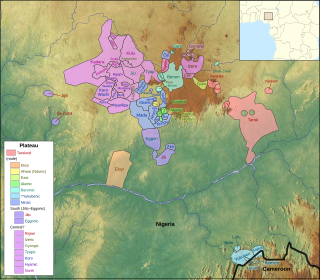Related Research Articles
The Monpa or Mönpa is a major tribe of Arunachal Pradesh in northeastern India. The Tawang Monpas have a migration history from Changrelung. The Monpa are believed to be the only nomadic tribe in Northeast India – they are totally dependent on animals like sheep, cow, yak, goats and horses. The Monpa have a very close affinity with the Sharchops of Bhutan. Their languages are Tibeto-Burman languages written with the Tibetan alphabet.
The Sharchops are the populations of mixed Tibetan, Southeast Asian and South Asian descent that mostly live in the eastern districts of Bhutan.
Tshangla is a Sino-Tibetan language of the Bodish branch closely related to the Tibetic languages. Tshangla is primarily spoken in Eastern Bhutan and acts as a lingua franca in the region; it is also spoken in the adjoining Tawang tract in the Indian state of Arunachal Pradesh and the Pemako region of Tibet. Tshangla is the principal pre-Tibetan language of Bhutan.

The forty or so Plateau languages are a tentative group of Benue–Congo languages spoken by 15 million people on the Jos Plateau, Southern Kaduna, Nasarawa State and in adjacent areas in central Nigeria.
Chakato is a West Chadic language spoken in Plateau State, Nigeria. It was identified by Roger Blench in 2016. It is spoken by about 500 people in one village, Dokan Tofa, which is located on the Jos-Shendam road in Plateau State. Blench (2017) suggests that Chakato may be related to spurious records of the Jorto language. Chakato speakers claim that their language is closely related to Goemai.
The Kho-Bwa languages, also known as Kamengic, are a small family of languages spoken in Arunachal Pradesh, northeast India. The name Kho-Bwa was originally proposed by George van Driem (2001). It is based on the reconstructed words *kho ("water") and *bwa ("fire"). Blench (2011) suggests the name Kamengic, from the Kameng area of Arunachal Pradesh. Alternatively, Anderson (2014) refers to Kho-Bwa as Northeast Kamengic.

The Jukunoid languages are a branch of the Benue-Congo languages spoken by the Jukun and related peoples of Nigeria and Cameroon. They are distributed mostly throughout Taraba State, Nigeria and surrounding regions.

The Tibeto-Burman languages are the non-Sinitic members of the Sino-Tibetan language family, over 400 of which are spoken throughout the Southeast Asian Massif ("Zomia") as well as parts of East Asia and South Asia. Around 60 million people speak Tibeto-Burman languages. The name derives from the most widely spoken of these languages, Burmese and the Tibetic languages, which also have extensive literary traditions, dating from the 12th and 7th centuries respectively. Most of the other languages are spoken by much smaller communities, and many of them have not been described in detail.

ʼOle, also called ʼOlekha or Black Mountain Monpa, is possibly a Sino-Tibetan language spoken by about 1,000 people in the Black Mountains of Wangdue Phodrang and Trongsa Districts in western Bhutan. The term ʼOle refers to a clan of speakers.

The Takpa or Dakpa language, Dakpakha, known in India as Tawang Monpa, also known as Brami in Bhutan, is an East Bodish language spoken in the Tawang district of Arunachal Pradesh, and in northern Trashigang District in eastern Bhutan, mainly in Kyaleng, Phongmed Gewog, Dangpholeng and Lengkhar near Radi Gewog. Van Driem (2001) describes Takpa as the most divergent of Bhutan's East Bodish languages, though it shares many similarities with Bumthang. SIL reports that Takpa may be a dialect of the Brokpa language and that it been influenced by the Dzala language whereas Brokpa has not.
Sherdukpen is a small language of India. It is one of the Kho-Bwa languages. There are two distinct varieties, Mey of Shergaon and Mey of Rupa. The name Sherdukpen comes from the words Shergaon and Tukpen. The language is known to speakers as Mey nyuk.
Lish is a Kho-Bwa language of West Kameng district, Arunachal Pradesh in India. It is closely related to Chug.
The Kulu language, Ikulu, also known as Ankulu or Ikolu, is a Plateau language of Nigeria. It is spoken by the Bakulu, found in the Zangon Kataf, Kachia and Kauru Local Government Areas of Kaduna State.
Jju is the native language of the Bajju people of Kaduna State in central Nigeria. As of 1988, there were approximately 300,000 speakers. According to Blench (2008), Jju—with more speakers—appears to be a form of Tyap.
Tala is a language from the West Chadian branch of the Chadic language family. The language is spoken in the central regions of Nigeria, and had approximately 1000 native speakers in 1993. The language is unwritten.
Chug is a Kho-Bwa language of West Kameng district, Arunachal Pradesh in India. It is closely related to Lish.
Sartang is a small language of India. It is one of the Kho-Bwa languages, closest to Sherdukpen. Varieties include Sartang of Jergaon and Sartang of Rahung.
The Yukubenic languages are a branch of either the Jukunoid family or the Plateau family spoken in southeastern Nigeria. Glottolog places Yukubenic in the Plateau family. Ethnologue, however, places Yukubenic in the Jukunoid family, based on Shimizu (1980), and Blench also follows this classification.
Nigbo is an extinct Plateau language of Nigeria. It was spoken near Agameti on the Fadan Karshi-Wamba road near Sanga LGA, Kaduna State. The language, listed in Blench (2012) and (2019), is not reported in Ethnologue or Glottolog. It is presumably an Alumic language based on its proximity to Akpondu, a language closely related to Alumu and Tesu.
Ajuwa (Ajegha) is a Plateau language of Kaduna State, Nigeria. It is spoken in Kalla, Afogo, Iburu, Idon, and Makyali towns. Ajuwa was reported by Roger Blench (2019), but is not reported in Ethnologue or Glottolog. Blench classifies it as Northwestern.
References
- ↑ "Monpa, Kalaktang", Ethnologue , retrieved 2023-02-13
- ↑ Blench, Roger (2012), Sorting out Monpa: the relationships of the Bodic languages. Draft Manuscript (PDF)
- ↑ "Spoken L1 Language: Kalaktang Monpa", Glottolog , retrieved 2023-02-12
